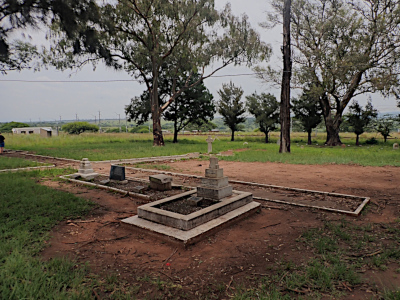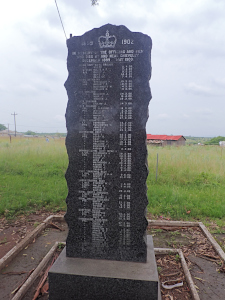The Chieveley Memorial and Military Cemetery: A Testimony to the Second Anglo-Boer War
Near the town of Colenso, lies a testimony to one of history's intriguing wars—the Second Anglo-Boer War. Amidst the echoes of cannon fire and memories of brave soldiers, the Chieveley Memorial and Military Cemetery stands as a somber reminder of the sacrifices made during the early stages of the war, and the many lives lost during the battles of Colenso and Tugela Heights.
As the British made significant efforts to relieve the town of Ladysmith, it became clear that medical facilities would be paramount. Thus, the Chieveley area was chosen to house a stationary hospital where wounded soldiers would be treated. All the British wounded from the battles of Colenso (15 December 1899) and Tugela Heights (14-27 February 1900) were attended to here.
The No. 4 Stationary Military Hospital, led by the Royal Army Medical Corps under Dr. F. Treves, faced arduous conditions but was equipped with the best medical supplies of the time. The diligent service of "The Ladies of the Colony" ensured the comfort of the wounded. The infrastructure comprised four grass-floored operating and dressing stations surrounded by bell tents, each capable of accommodating up to 100 patients. Those wounded were transported here by train, ambulance, or carried by Indian stretcher-bearers, sometimes from vast distances.
Among the many interred in the cemetery is Lt. Freddie Roberts. A tale of bravery and sacrifice, Roberts died attempting to save British artillery during the Battle of Colenso. What adds depth to his story is his lineage—Freddie was the son of Lord Roberts, who would later helm the British forces in South Africa. It was under Lord Roberts, in tandem with Lord Kitchener, that the infamous scorched earth policy and civilian concentration camps emerged as stark aspects of the British strategy.
The centerpiece of the site is the Chieveley South African War Memorial. Carved from rough-hewn stone, this obelisk stands tall with the names of 134 men from the British Contingent who perished during the South African War. Each name represents a story, a sacrifice, and a commitment to a cause.
While the Chieveley Cemetery was notably renovated between 2006 and 2010, its current state as of December 2022 paints a bleak picture. The responsibility for its upkeep was entrusted to the KwaZulu-Natal Heritage Organisation, AMAFA, after the renovations. The neglect it faces now underscores the need for collective historical preservation.
The Chieveley Memorial and Military Cemetery not only commemorates the brave souls who fought during the Second Anglo-Boer War but also serves as a lesson on the ephemeral nature of memory. As it stands today, it calls out for attention, urging us to remember and honor the sacrifices made over a century ago.


